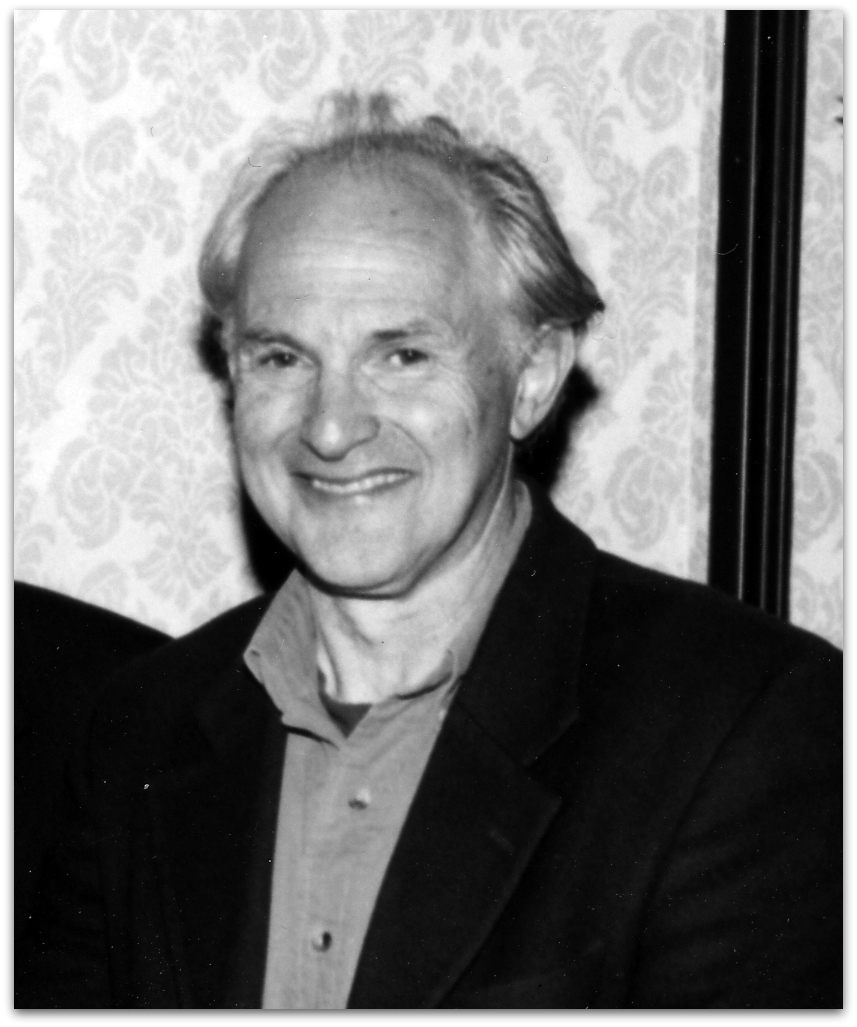Nobel laureate and climate advocate Al Gore is optimistic about climate change in his new TED Talk. In his talk, Gore proposes three questions — the answers of which help make the case for optimism on climate change.
We’re delving into our archives as part of our continuing Masters Series podcasts. In 1995, ECS and the Chemical Heritage Foundation worked to compile various oral histories of some of the biggest names in electrochemical and solid state science.
One of those key figures was Norman Hackerman, a giant among giants. Hackerman was a world renowned scientist, an outstanding educator, a highly successful administrator, and a champion for basic research. Hear his voice once again as he tells colorful stories of the science, his life, and everything in between.
Listen and download these episodes and others for free through the iTunes Store, SoundCloud, or our RSS Feed. You can also find us on Stitcher.
An infographic that can visually tell the story of climate changes has been making its rounds on the internet.
Brainchild of climate scientists Ed Hawkins and Jan Fuglestvedt, the animation shows how global temperatures have spiraled upwards and outwards since 1850.
Spiralling global temperatures from 1850-2016 (full animation) https://t.co/YETC5HkmTr pic.twitter.com/Ypci717AHq
— Ed Hawkins (@ed_hawkins) May 9, 2016
 As part of our continued commitment to Open Access publishing, ECS is in the process of ensuring an increasingly robust management of article credits, APCs, and APC discounts. ECS is pleased to announce we are partnering with CCC RightsLink, which is a sophisticated self-service system that allows authors to pay the appropriate fee or select the article credit for their articles. CCC RightsLink will help ECS to future-proof its Open Access activities in a sustainable way.
As part of our continued commitment to Open Access publishing, ECS is in the process of ensuring an increasingly robust management of article credits, APCs, and APC discounts. ECS is pleased to announce we are partnering with CCC RightsLink, which is a sophisticated self-service system that allows authors to pay the appropriate fee or select the article credit for their articles. CCC RightsLink will help ECS to future-proof its Open Access activities in a sustainable way.
As of May 12, 2016 CCC RightsLink will be fully integrated with our article submission process. Authors will be able to pay color charges, supplemental material fees, and claim Open Access article credits through RightsLink’s self-service portal. (more…)
The future of technology

Image: Tau Zero/Flickr
The iconic Moore’s law has guided Silicon Valley and the technology industry at large for over 50 years. Moore’s prediction that the number of transistors on a chip would double every two years (which he first articulated at an ECS meeting in 1964) bolstered businesses and the economy, as well as took society away from the giant mainframes of the 1960s to today’s era of portable electronics.
But research has begun to plateau and keeping up with the pace of Moore’s law has proven to be extremely difficult. Now, many tech-based industries find themselves in a vulnerable position, wondering how far we can push technology.
Better materials, better chips
In an effort to continue Moore’s law and produce the next generation of electronic devices, researchers have begun looking to new materials and potentially even new designs to create smaller, cheaper, and faster chips.
“People keep saying of other semiconductors, ‘This will be the material for the next generation of devices,’” says Fan Ren, professor at the University of Florida and technical editor of the ECS Journal of Solid State Science and Technology. “However, it hasn’t really changed. Silicon is still dominating.”
Silicon has facilitated the growth predicted by Moore’s law for the past decades, but it is now becoming much more difficult to continue that path.
May the 4th be with you
Whether you’re a Star Wars superfan or find yourself lost when the conversation turns to discussions of the feasibility of the Death Star, you can probably identify the epic space series’ iconic lightsaber. The lightsaber has become one of the most recognizable images in popular culture, but is it purely fiction or could it be a reality?
According to the Star Wars books, lightsabers are pretty complex devices but essentially boil down to a few key elements: a power source and emitter to create light, a crystal to focus the light into a blade, a blade containment field, and a negatively charged fissure. In the Star Wars galaxy, a lightsaber creates energy, focuses it, and contains it.
But that’s fiction and those ideas are not in line with current science and technology. So how could we build a lightsaber with the tools we have today?
Many people look initially to laser technology when discussing a practical lightsaber. It’s unrealistic to say that light could be the source of the blade seeing as light has no mass (creating a pretty insufficient weapon), but lasers could be an alternative. It may seem contradictory to say that lasers could be the blade in a lightsaber when lasers are essentially light focused to a very fine point, but as Looper puts it, light is to a laser what a tree is to paper.
ECS Podcast – Khalil Amine on Next Generation Li-ion Batteries
Posted on May 4, 2016 by Amanda StallerWhile you may be unfamiliar with Khalil Amine, he has made an immense impact in your life if you happen to use batteries in any way.
As a researcher with a vision of where the science can be applied in the market, Amine has been monumental in developing and moving some of the biggest breakthroughs in battery technology from the lab to the marketplace.
Amine is currently head of the Technology Development Group in the Battery Technology Department at Argonne National Laboratory. From 1998-2008 he was the most cited scientist in the world in the field of battery technology.
He is the chair of the organizing committee for the 18th International Meeting on Lithium Batteries being held this June in Chicago.
Listen to the podcast and download this episode and others for free through the iTunes Store, SoundCloud, or our RSS Feed. You can also find us on Stitcher.
 A giant among giants
A giant among giants
Harry Kroto, distinguished chemist and pioneering nanocarbons researcher, passed away on April 30, 2016 at the age of 76. Kroto, a giant among giants, made an immense impact not only on ECS and its scientific discipline – but the world at large.
“Harry Kroto’s passing is a great loss to science and society as a whole,” says Bruce Weisman, professor at Rice University and division chair of the ECS Nanocarbons Division. “He was an exceptional researcher whose 1985 work with Rick Smalley and Bob Curl launched the field of nanocarbons research and nanotechnology.”
Revolutionizing chemistry
That work conducted by Kroto, Smalley, and Curl yielded the discovery of the C60 structure that became known as the buckminsterfullerene (or the “buckyball” for short). Prior to this breakthrough, there were only two known forms of pure carbon: graphite and diamond. The work opened a new branch in chemistry with unbound possibilities, earning the scientists the 1996 Nobel Prize in Chemistry.
The field of nanocarbons and fullerenes, since the discovery by Kroto and company, has evolved into an area with almost limitless potential. The applications for this scientific discipline are wide-ranging – from energy harvesting to sensing and biosensing to biomedical applications and far beyond. Research in this field continues to fill the pages of scholarly journals, making possible innovations that were not even conceived before the seminal 1985 work.
$30 Million in Funding For New Technologies in Renewable Liquid Fuels
Posted on April 29, 2016 by Amanda Staller The U.S. Department of Energy’s Advanced Research Projects Agency-Energy (ARPA-E) has recently announced up to $30 million in funding for a new program that focuses on renewable energy to convert air and water into cost-competitive liquid fuels.
The U.S. Department of Energy’s Advanced Research Projects Agency-Energy (ARPA-E) has recently announced up to $30 million in funding for a new program that focuses on renewable energy to convert air and water into cost-competitive liquid fuels.
The program, titled Renewable Energy to Fuels through Utilization of Energy-dense Liquids (REFUEL), is aimed at developing technologies that use renewable energy to convert air and water into carbon neutral liquid fuels – which can be converted into hydrogen or electricity to provide power for sustainable transportation.
The majority of vehicles in the transportation sector depend on liquid fuels such as gasoline or diesel to operate. While liquid fuels are energy dense and can be stored for a long period of time, liquid fossil fuels emit significant amounts of carbon dioxide into the environment. These emissions account for over 20 percent of the U.S.’s total greenhouse gas emissions and contribute to the overall effects of climate change.
We talk about climate change a lot here at ECS, but the realities of rising sea levels and record-breaking carbon emissions in the atmosphere makes for pretty grim material. In an effort to drum up support for environmental protection, Defend Our Future teamed up with Funny or Die to give the climate change discussion a little comic relief.
Cloris Leachman, Michael Lerner, and a few other funny people discuss how seniors view climate change – or as they describe it, the “after I’m dead problem.”
After all the laughs, Defend our Future has one simple message: old people don’t care about climate change, that’s why you have to.




